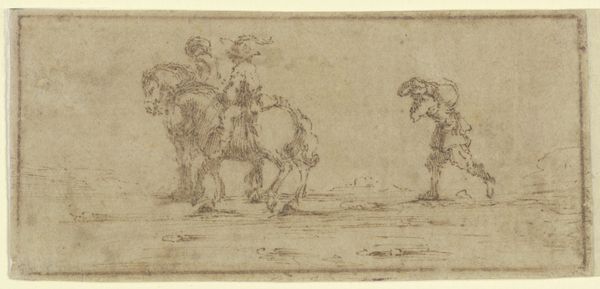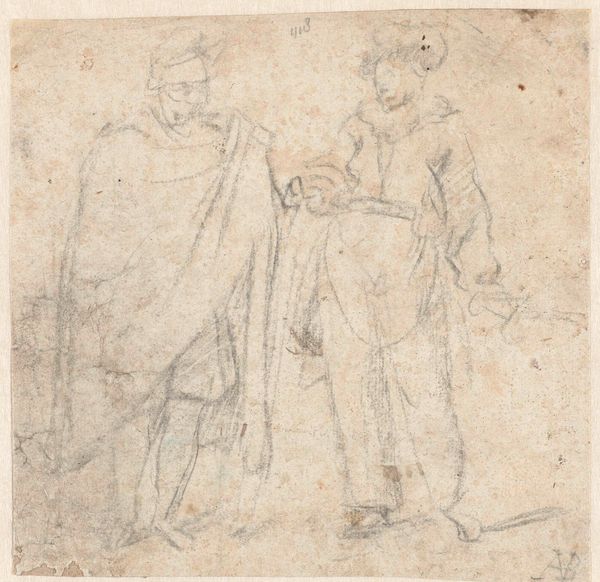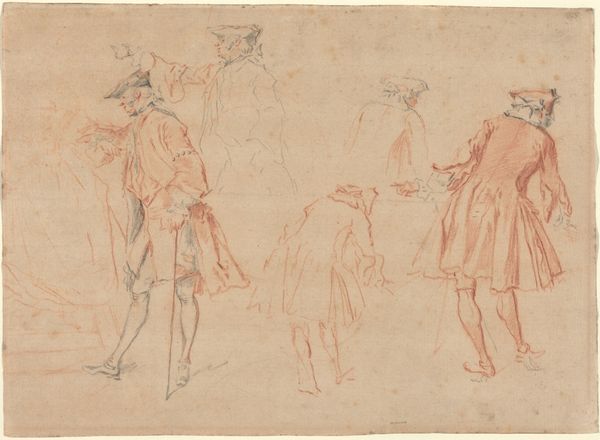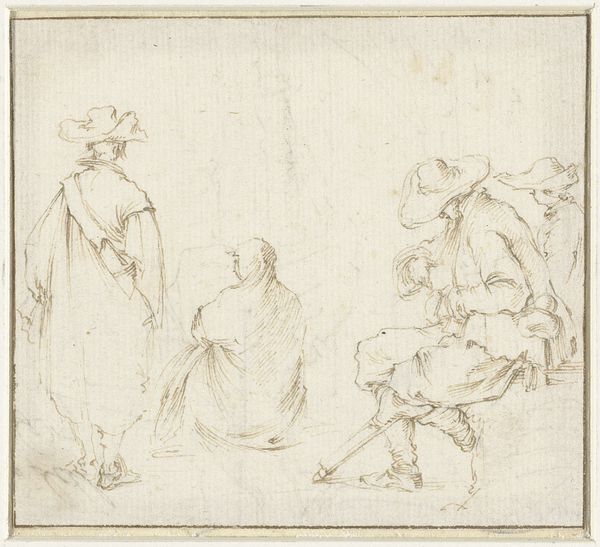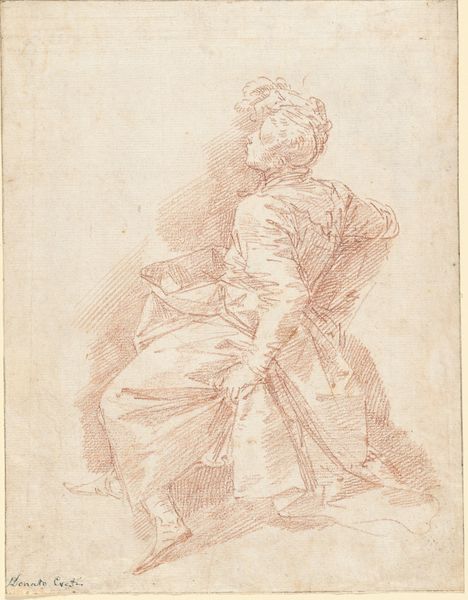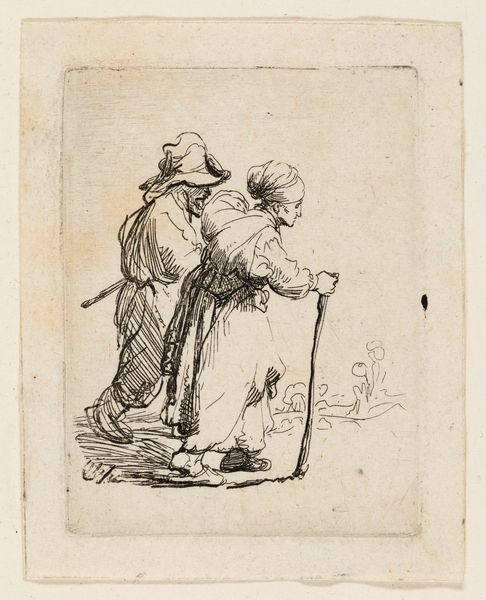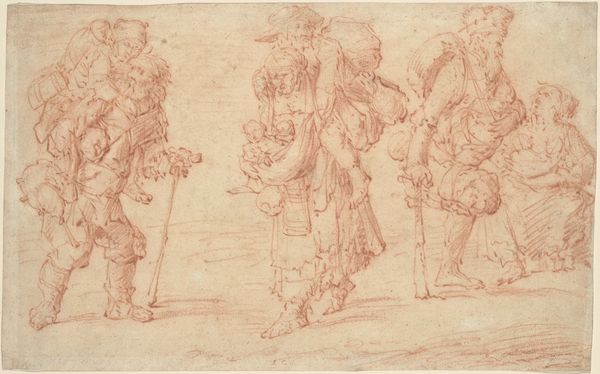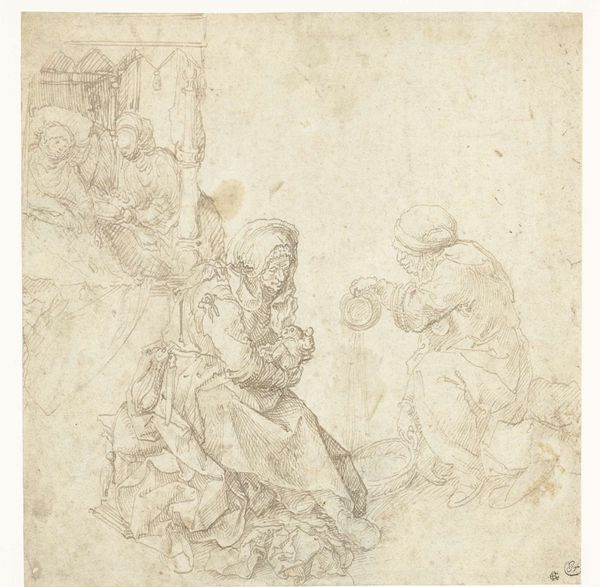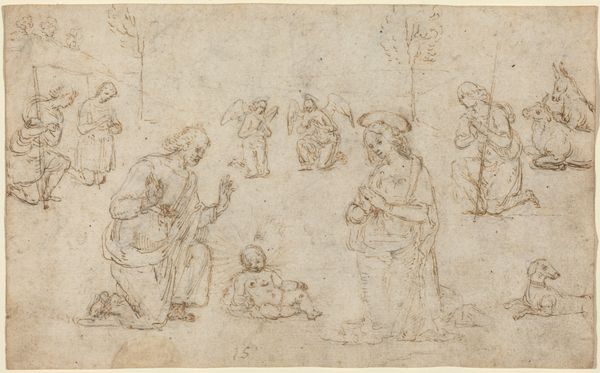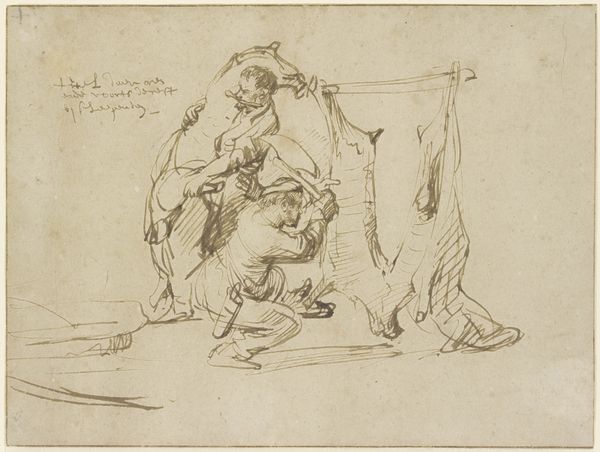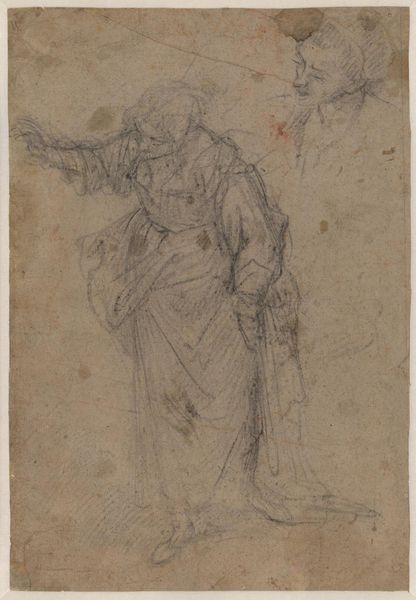
drawing, paper, chalk, graphite, black-chalk
#
portrait
#
drawing
#
landscape
#
figuration
#
paper
#
form
#
chalk
#
line
#
graphite
#
genre-painting
#
northern-renaissance
#
black-chalk
#
realism
Dimensions: 171 × 180 mm
Copyright: Public Domain
Curator: Here we have Rembrandt van Rijn's drawing, "Elderly Peasant Couple," housed here at the Art Institute of Chicago. It’s an intimate portrayal rendered in black chalk, graphite, and white chalk on paper. Editor: It's striking how a few lines can tell such a story. They're walking... somewhere. I can almost feel the grit beneath their feet, and imagine what stories these two could tell! Curator: The couple walks to the left, perhaps suggesting their moving against established power structures and toward the margins. Their hunched postures and walking sticks denote hardship, age, and a resilience born of a life intimately connected to the land and its demands. Editor: See how his hat sort of droops, mirroring his shoulders? It’s more than just a picture of old age, it’s about survival, right? Like every wrinkle is a map of what they've endured together. Makes you wonder, were they happy? Curator: Considering Rembrandt’s socio-political milieu, these peasants likely existed on the periphery of the Dutch Golden Age. Rembrandt, by depicting them with dignity and empathy, offered a counternarrative to the dominant ideology that valued wealth and status. This is a powerful comment on class. Editor: It's also incredibly personal, isn't it? The artist probably caught a glimpse of them walking on a road and boom, you have it right there, this incredibly evocative study of a real moment. This drawing it's so bare, and, I don't know, human, isn't it? Curator: Yes, Rembrandt captured a raw truth, subtly protesting the romanticized portrayals of rural life, spotlighting instead the realities faced by marginalized people during that time. Editor: It really gets you thinking about your own family too. These anonymous folks, captured in a flash, kind of become universal symbols. They’re our ancestors, really, in a way, facing down life together, one step at a time. Curator: Absolutely. It reminds us to look at art as both a historical document and a catalyst for reflection, sparking dialogues about past injustices and prompting introspection on contemporary societal power dynamics. Editor: To be that close, even for a moment, to the lives of people gone for centuries is an incredible gift from Rembrandt. A shared journey etched in chalk.
Comments
No comments
Be the first to comment and join the conversation on the ultimate creative platform.
